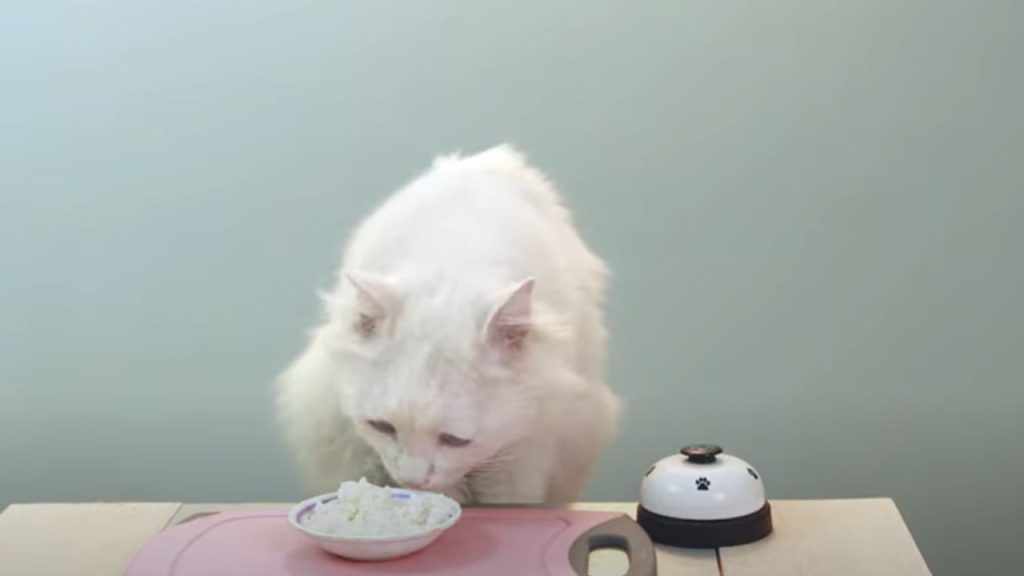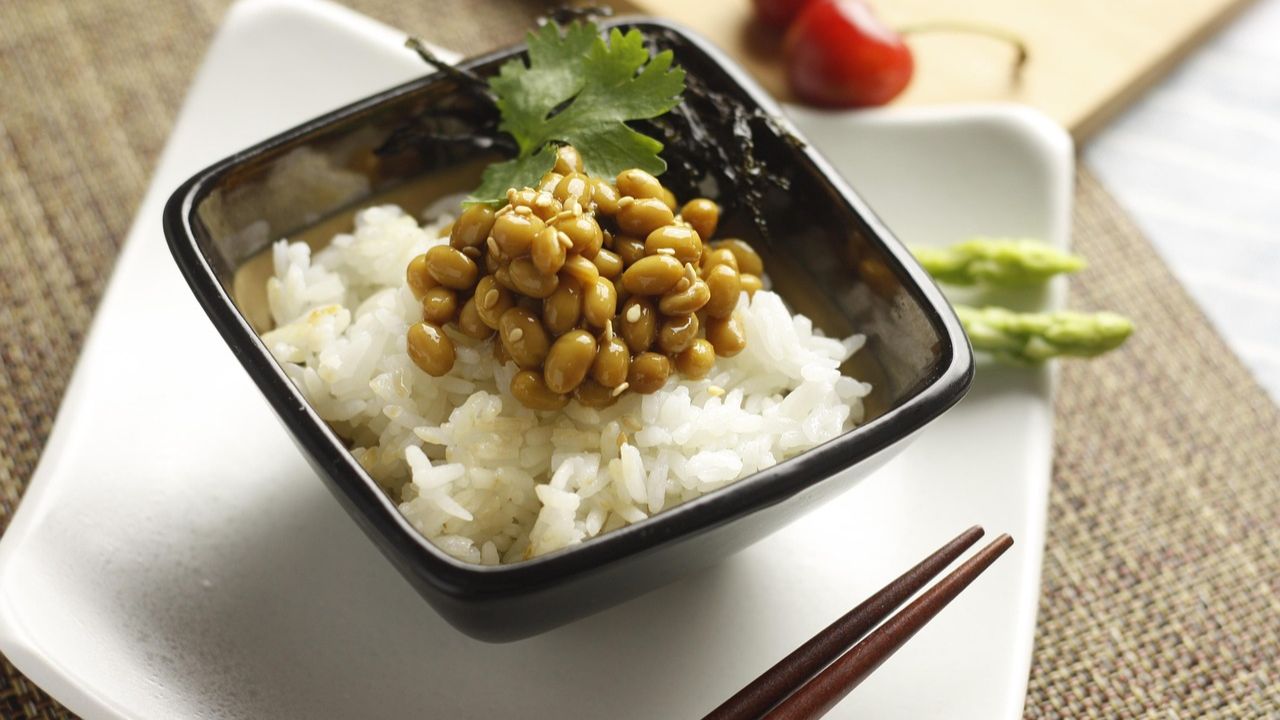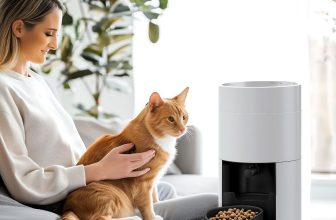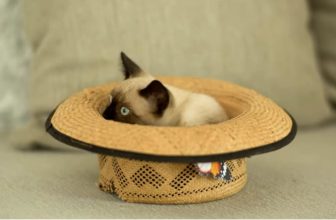Do Cats Like Rice? Is It Safe and Tasty for Them?

Do cats like rice? While cats can eat rice, whether they enjoy it depends on the individual cat.
Some cats may enjoy the texture or taste, while others show little interest. Rice isn’t a natural part of a cat’s diet. Since cats are obligate carnivores, they rely on meat to meet their nutritional needs. While small amounts of rice are generally safe, it doesn’t provide the essential nutrients cats need.
Many pet owners add rice to help with digestive issues, but each cat reacts differently. Some may find rice appealing, while others ignore it entirely. In this blog post, we’ll explore the question: Do cats like rice, and how it might affect their health? Let’s dive in!
Cats And Their Diet
Cats are curious animals, and their diet often sparks questions. One common question is, “Do cats like rice?” Understanding what cats like to eat and what they need is important. This helps keep them healthy and happy. Let’s dive into what makes up a cat’s diet and if rice is a part of it.
Natural Diet
Cats are natural carnivores. This means their diet in the wild consists mostly of meat. They hunt small animals like birds, mice, and insects. This provides them with the protein and fat they need.
Here are some key points about a cat’s natural diet:
- High in protein: Cats need a lot of protein to stay healthy.
- Rich in fats: Fats provide energy for their active lifestyle.
- Minimal carbohydrates: Cats do not need many carbs.
Unlike humans, cats do not have the enzymes to digest plant material well. Their bodies are built to process meat efficiently. This is why their natural diet does not include grains like rice.
Nutritional Needs
Cats have specific nutritional needs that must be met for them to thrive. Protein is the most important part of their diet. It supports their muscles, skin, and fur. Taurine, an amino acid found in meat, is essential for heart and eye health.
Here is a brief table of essential nutrients for cats:
| Nutrient | Importance |
|---|---|
| Protein | Supports muscle, skin, and fur |
| Taurine | Essential for heart and eye health |
| Fats | Provide energy |
| Vitamins | Support overall health |
While cats can eat small amounts of rice, it should not be a major part of their diet. Rice does not provide the nutrients they need. It is best to feed them food that meets their specific nutritional needs.
Can Cats Eat Rice?
Many cat owners wonder about the foods that are safe for their pets. Rice is one of the common foods found in households. So, do cats like rice? And more importantly, can cats eat rice? This blog post will explore these questions and provide some insights on the types of rice and their health benefits for cats.
Types Of Rice
There are various types of rice, each with different properties. Understanding these can help you decide which one might be more suitable for your cat.
- White Rice: This is the most common type of rice. It is easy to digest but has fewer nutrients compared to other types.
- Brown Rice: This type is less processed and retains more nutrients. It has more fiber and can be a bit harder to digest.
- Basmati Rice: Known for its unique aroma and long grains. It is similar to white rice in terms of nutrients.
- Wild Rice: This is not actually rice but a type of grass seed. It is high in protein and fiber.
- Sushi Rice: A short-grain sticky rice. It is often used in Japanese dishes.
Each type of rice has its benefits and drawbacks. White rice is safe but offers minimal nutritional value. Brown rice is healthier but may cause digestive issues if not cooked properly. Basmati rice falls somewhere in between. Wild rice is nutrient-dense but not commonly used for cats. Sushi rice is less nutritious and stickier, which might not be ideal.
Health Benefits
Rice can offer some health benefits for cats when given in moderation. Here are a few:
| Benefit | Description |
|---|---|
| Easy to Digest | White rice is gentle on the stomach and helps with digestive issues. |
| Energy Source | Rice provides carbohydrates that can give your cat a quick energy boost. |
| Helps with Diarrhea | Plain, boiled white rice can help firm up stools and ease diarrhea symptoms. |
| Low in Fat | Rice is low in fat, making it a good option for overweight cats. |
While rice can be beneficial, it should not replace your cat’s regular food. Cats need a diet rich in protein and other essential nutrients. Rice can be an occasional treat or a temporary addition during digestive issues. Always consult your vet before making any changes to your pet’s diet.
Risks Of Feeding Rice
Cats are curious creatures. Owners often wonder what human foods are safe for them. Rice is a common food, but is it good for cats? While rice can be safe in small amounts, there are risks. Understanding these risks is vital for keeping your cat healthy.
Digestive Issues
Feeding rice to cats can cause digestive problems. Cats are obligate carnivores, meaning their bodies are designed to digest meat, not grains. Rice can be hard for them to digest. This can lead to:
- Diarrhea: Rice can upset their stomach, leading to loose stools.
- Constipation: Some cats may have trouble passing stools after eating rice.
- Vomiting: Undigested rice can cause vomiting.
These issues are more common if the cat eats rice often. Cats need a diet high in protein. Rice does not provide the needed nutrients. Always monitor your cat after feeding them new foods. If you notice any digestive issues, stop giving rice immediately.
Allergic Reactions
Some cats can have allergic reactions to rice. Symptoms of allergies can be mild or severe. Watch for these signs:
- Itching: Your cat may scratch more than usual.
- Swelling: Look for swelling around the face or paws.
- Breathing problems: Allergies can cause difficulty in breathing.
- Skin rashes: Red or inflamed skin might appear.
Allergic reactions can be serious. If you see any signs of allergy, contact your vet. Allergies can develop suddenly, even if your cat has eaten rice before without problems. Always introduce new foods slowly and in small amounts.
Rice As A Treat
Many cat owners wonder if it’s safe to feed their cats rice. Cats are obligate carnivores, which means their diet should be mainly meat. But sometimes, giving them a small treat can be fun. Rice is a common food in many households. Let’s explore if cats like rice and how to offer it as a treat.
Moderation Is Key
Feeding rice to cats should be done in moderation. Too much rice can cause digestive issues. Here are some points to keep in mind:
- Rice should not be a main meal. It lacks essential nutrients.
- Offer rice as a small treat. Just a few grains will do.
- Plain rice is best. Avoid adding salt, butter, or spices.
Cats have sensitive stomachs. Introducing new foods slowly helps avoid problems. Watch your cat closely after giving rice. Look for any signs of allergies or digestive issues. If you see anything unusual, stop feeding rice immediately.
Consult your vet before adding anything new to your cat’s diet. They can provide personalized advice based on your cat’s health needs.
Best Practices
Following some best practices ensures that your cat enjoys rice safely. Here’s a simple table to guide you:
| Practice | Details |
|---|---|
| Use Plain Rice | No salt, butter, or spices. |
| Feed Small Amounts | Only a few grains at a time. |
| Watch for Reactions | Check for allergies or digestive issues. |
| Consult Your Vet | Get personalized advice. |
Always remember to keep your cat’s main diet balanced. Treats like rice should be rare. A balanced diet is key to a happy and healthy cat.

Alternatives To Rice
Cats are known for their curious eating habits. Many cat owners wonder if rice is safe for their feline friends. While cats can eat rice, it is not always the best option. Rice is not a natural part of a cat’s diet. Cats are obligate carnivores, which means they need meat. This blog post will explore alternatives to rice for your cat’s diet.
Other Grains
Some grains can be a better option for cats than rice. These grains can offer more nutrients and be easier for cats to digest.
Here are some grains to consider:
- Oats: Oats are high in protein and are easy for cats to digest. They also provide fiber and essential vitamins.
- Barley: Barley is rich in fiber and can help with digestion. It also offers a good mix of vitamins and minerals.
- Quinoa: Quinoa is a complete protein, which means it contains all the essential amino acids. It is also gluten-free.
- Millet: Millet is easy to digest and provides a good source of energy. It is also rich in vitamins and minerals.
These grains should be cooked and served in small amounts. Always consult your vet before adding new foods to your cat’s diet. Your cat’s health and well-being should always come first.
Vegetable Options
Vegetables can also be a good addition to your cat’s diet. They offer vitamins, minerals, and fiber. Not all vegetables are safe for cats, though. Choose vegetables that are low in sugar and easy to digest.
Here are some safe vegetable options:
- Carrots: Carrots are rich in vitamins and low in calories. They should be cooked and cut into small pieces.
- Green Beans: Green beans are high in fiber and low in calories. They can help with digestion and weight management.
- Peas: Peas are a good source of vitamins and minerals. They are also high in protein and fiber.
- Spinach: Spinach is rich in vitamins and minerals. It should be given in small amounts to avoid any digestive issues.
Always cook vegetables before serving them to your cat. Raw vegetables can be hard to digest and may cause stomach issues. Start with small amounts and watch for any signs of allergies or discomfort.
Consult your vet before making any changes to your cat’s diet. Your vet can provide guidance on the best foods for your cat’s health.
Observing Cat Preferences
Cats are known for their curious and picky eating habits. Many cat owners wonder about feeding their pets different types of food. One common question is, “Do cats like rice?” It’s essential to understand what cats enjoy eating. Observing cat preferences can help us answer this question. By watching their behavior, we can learn a lot about their likes and dislikes.
Individual Tastes
Just like humans, cats have unique tastes. Some cats may enjoy eating rice, while others may not. The preference can depend on many factors. These include their age, breed, and even past experiences with food.
Here are some factors that influence a cat’s taste:
- Age: Older cats may have different taste preferences than younger ones.
- Breed: Some breeds are more open to trying new foods.
- Past experiences: If a cat had a bad experience with rice before, it might avoid it.
Understanding these factors can help us cater to their preferences better. It’s always a good idea to try small portions first. This way, we can see if our cats like the new food. If they do, we can gradually increase the amount.
Behavioral Cues
To know if your cat likes rice, watch their behavior closely. Cats communicate a lot through their actions. They will show clear signs if they enjoy or dislike a food.
Here are some cues to look for:
| Behavioral Cue | Meaning |
|---|---|
| Sniffing the food | Curiosity about the new food. |
| Eating the food | They like the taste of rice. |
| Turning away | Disinterest or dislike for the food. |
| Meowing or pawing | Asking for more or showing excitement. |
These cues can give us a good idea of their preferences. If a cat turns away from rice, it’s better to avoid feeding it. If they seem excited, it’s a positive sign. Always ensure the rice is plain and cooked. Avoid adding any spices or salt as they can be harmful to cats.
Feeding Guidelines
Many pet owners wonder if cats can eat rice. It’s important to know the best way to feed rice to cats. This guide will help you understand the right serving sizes and how often to give rice to your cat.
Serving Sizes
Cats are natural carnivores. Their diet should mainly consist of meat. Rice should be an occasional treat. It is not a substitute for their regular food. When feeding rice to your cat, follow these guidelines:
- Cooked rice: Always feed cooked rice. Raw rice can be hard to digest.
- Small amounts: A teaspoon of rice is enough for a small cat.
- Mix with meat: Combine rice with your cat’s regular meat-based food.
Avoid seasoning. Cats do not need salt, pepper, or spices. These can be harmful to them. Plain, cooked rice is best.
| Cat Size | Serving Size |
|---|---|
| Small cat (up to 5 lbs) | 1 teaspoon |
| Medium cat (5-10 lbs) | 2 teaspoons |
| Large cat (10-15 lbs) | 1 tablespoon |
Frequency
Feeding rice too often can cause issues for your cat. Rice is not a primary food source. It lacks many nutrients that cats need. Limit rice to once a week. This ensures your cat gets a balanced diet.
Monitor your cat. Watch for any signs of an upset stomach or diarrhea. If your cat shows any problems, stop feeding rice. Always consult your vet before making changes to your cat’s diet. They can provide specific advice for your cat’s needs.
Some cats may have allergies. If you notice itching, swelling, or other allergic reactions, avoid feeding rice in the future. Rice should be a small part of their diet. A treat, not a staple.
Consulting A Veterinarian
Many cat owners wonder if their furry friends can eat rice. Rice is a common ingredient in many households. Understanding its impact on cats is important. Consulting a veterinarian can provide clarity. They offer the best advice for your pet’s diet.

When To Seek Advice
Cats have different dietary needs from humans. Before changing your cat’s diet, seek professional advice. Here are some signs to watch for:
- Unusual behavior after eating rice
- Digestive issues like vomiting or diarrhea
- Loss of appetite or weight
These signs can indicate an adverse reaction. A veterinarian can help determine the cause. They will perform tests if necessary. This ensures your cat remains healthy.
It is essential to get advice if your cat has existing health issues. Conditions like diabetes or kidney problems can worsen. A vet can provide a safe dietary plan. This plan will consider all health factors.
Regular check-ups are also crucial. They help monitor your cat’s health. Early detection of issues can prevent serious problems. Always consult a vet before making any major changes to your cat’s diet.
Dietary Recommendations
A balanced diet is key to a cat’s health. Here are some recommendations for feeding rice to cats:
- Small quantities of cooked rice
- Mix rice with regular cat food
- Avoid adding spices or seasonings
- Monitor your cat for any adverse reactions
Rice can be a good source of carbohydrates. But it should not be a main part of the diet. Cats are obligate carnivores. This means they need animal protein to stay healthy. Rice can be an occasional treat.
Here is a simple guideline for feeding rice:
| Cat Weight | Amount of Rice |
|---|---|
| Up to 5 lbs | 1 teaspoon |
| 5-10 lbs | 1-2 teaspoons |
| Over 10 lbs | 1 tablespoon |
Always start with a small amount. Observe your cat’s reaction. If there are no issues, you can continue. Remember, moderation is crucial. Too much rice can lead to nutritional imbalances.
Frequently Asked Questions: Do Cats Like Rice?
Can You Feed Rice To Cats?
Yes, you can feed rice to cats in small amounts. It helps with digestion and provides energy. Ensure it is plain and fully cooked. Avoid seasoning or additives. Always consult your vet before introducing new foods.
Which Food Do Cats Love Most?
Cats love high-protein foods like fish, chicken, and turkey. Many cats also enjoy wet food for its texture and flavor.
Can Cats Eat A Piece Of Rice?
Yes, cats can eat a small piece of plain rice. It should be cooked and unseasoned. Rice can help with digestive issues, but it should only be given occasionally. Always consult your vet for dietary advice.
Why Do Cats Hate Rice?
Cats dislike rice because they are obligate carnivores and prefer meat-based diets. Rice lacks essential nutrients for them.
Can Cats Eat Rice Safely?
Yes, cats can eat rice in small amounts. It should be cooked and plain.
Conclusion
Cats may eat rice, but it should not be their main food. Rice lacks essential nutrients cats need for optimal health. Small amounts of rice are safe, but not daily. Always consult your vet before changing your cat’s diet. Offer your cat a balanced, protein-rich diet for their well-being.
Treat rice as an occasional snack, not a regular meal. Your cat’s health depends on proper nutrition. Make informed choices for your furry friend’s diet. Keep your cat happy and healthy with the right food.







